Shower faucets
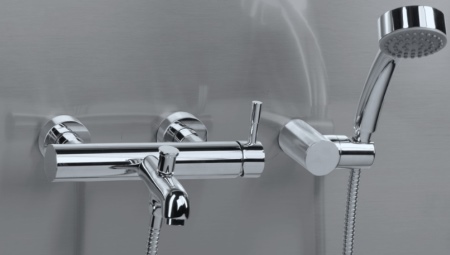
Modern shower cabins are quite complex and functional designs. Water in them, depending on the model, is supplied from different places. Based on this, shower faucets can differ significantly from their conventional counterparts installed on sinks and bathrooms.
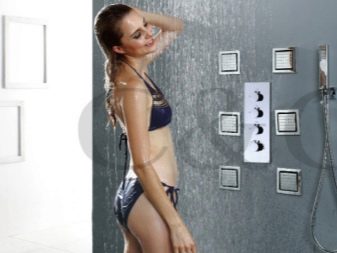

Design features
The main task of any mixer for a shower stall is mixing water and the direction of its supply, taking into account the selected mode. The design features of such devices are determined by the algorithm of their functioning.

The latter looks like this:
- water enters the block and is mixed to the required temperature;
- water is directed to the second block, from which it is distributed depending on the set supply mode, this unit includes one input and several outputs, the number of which depends on the provisions of the design of the mixer positions.

Temperature and pressure control is carried out from the cabin itself using valves and handles (levers). In the overwhelming majority of cases, all other elements of the working system are hidden by a panel with various decorative overlays.
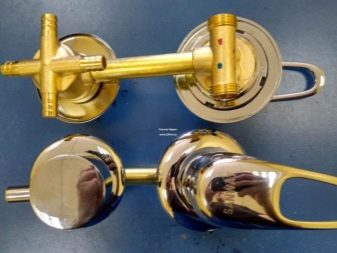
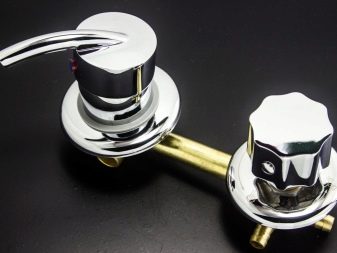
Special attention should be paid to the faucet in the shower stall. As a rule, it is much smaller than similar bathroom devices and washbasins.
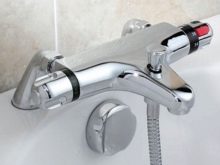
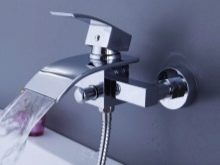
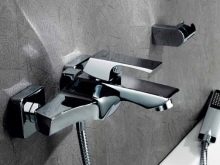
Most often, such mixers do not have a tap at all for infusing liquid and a corresponding mechanism for switching the flow of water.

The design of the considered units of modern shower cabins includes:
- body of two glasses and a connecting tube;
- cartridge, which is a device for mixing cold and hot water;
- a divertor cartridge, which is responsible for the distribution of water flows along the cabin drains;
- fasteners for cartridges, their list may include clips, gaskets and nuts of the corresponding diameter;
- flywheels, which are external controls for the device;
- various decorative elements.
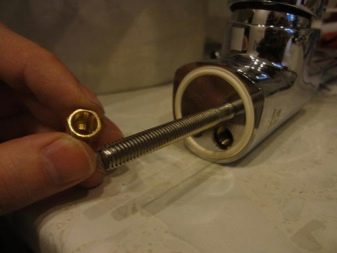
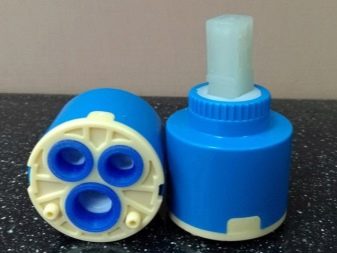
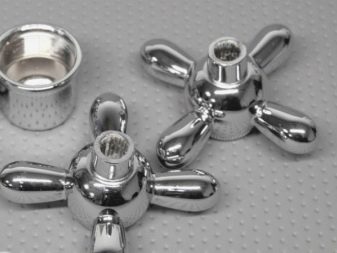
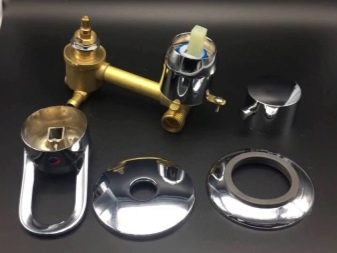
Views
An impressive selection of shower cabin models is now presented on the market. Their list includes, for example, options with a rain shower. In parallel, the developers strive to constantly expand the range of mixers.
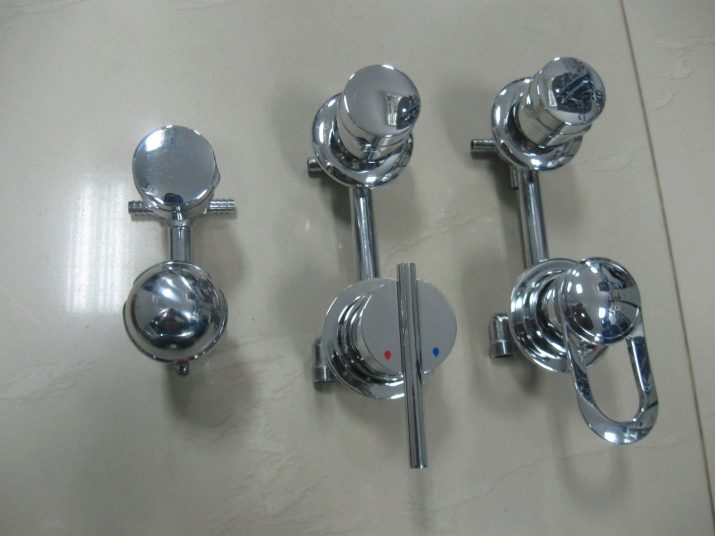
Today there are different types of mixers, which are classified according to several main parameters. Taking into account the installation method, the devices are divided into wall-mounted and built-in. In the first case, we are talking about the classic version, which is considered by many to be universal.
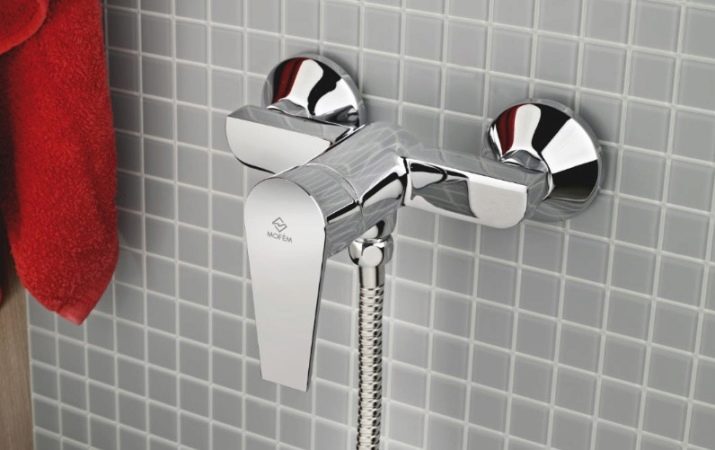
By and large, these are conventional bathroom faucets that do not have a spout. They have conventional joystick or semi-turn, as well as touch control mechanisms. In addition, some models of wall devices can be supplied with stands and equipped with thermostats.
This type of mixers has a number of undeniable advantages. These include affordable cost, ease of installation and versatility. These devices, including corner models, are suitable for open and closed cabins.
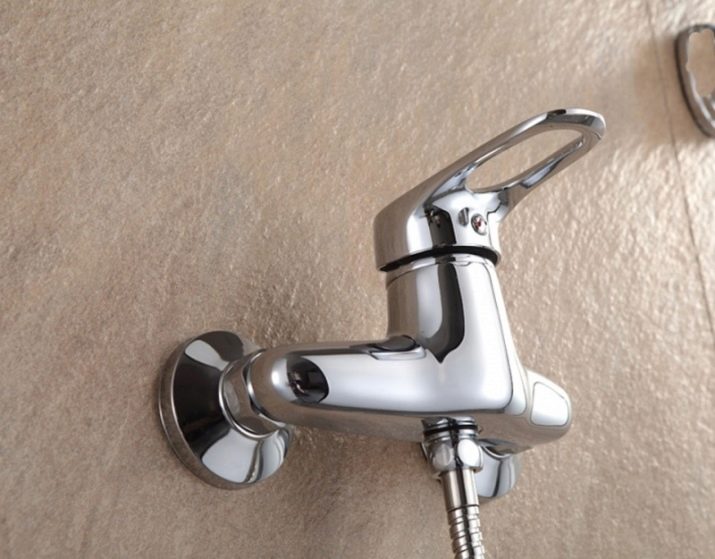
Built-in mixers are mounted behind the cab panel. In this case, only the controls remain in sight. It is worth highlighting the following main advantages of such devices:
- aesthetics;
- compactness;
- the ability to control several spouts at the same time.
The disadvantages in this case include a rather high cost compared to wall-mounted devices. An equally important point will be certain difficulties in dismantling, replacing and performing repair work.
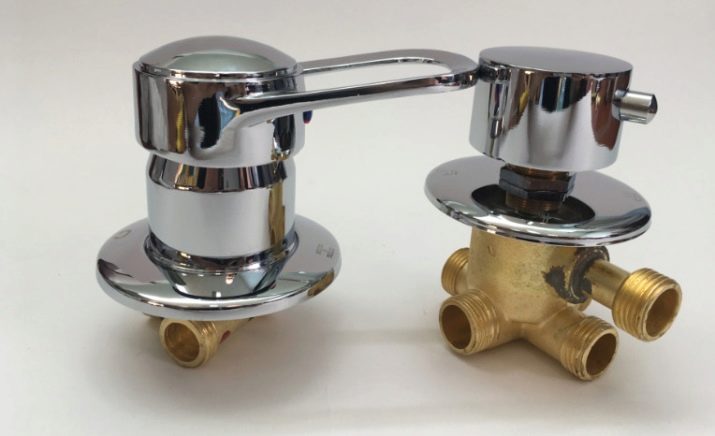
Mechanical
Mechanical models are one of the common types of mixers. They are at the moment the simplest system that involves only mixing water. Such models can have two different control mechanisms. In the first case, we mean single-lever mixers, which, in turn, are divided into ball and cartridge mixers.
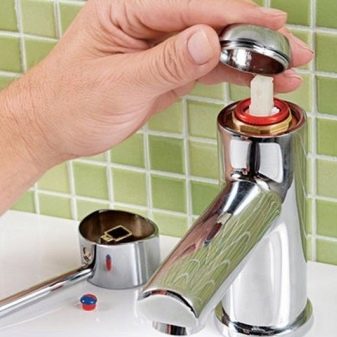
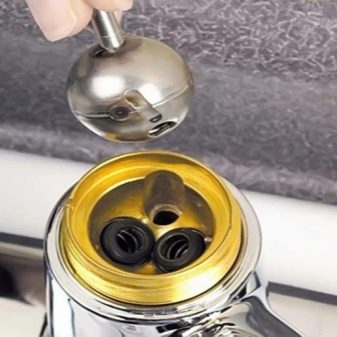
The basic element of a ball mixer is a three-hole ball (for cold, hot and mixed water). The flow rate and temperature are controlled by changing the position of this ball.
The design is reliable and relatively inexpensive.
The disadvantages include the need to periodically replace the sealing gum.

The second option is devices based on two cartridge plates. In the upper part of the device, hot and cold water is mixed, and the lower one has holes for its distribution. By changing the position of the joystick, the mixing chamber is aligned with one of the holes.
The main advantages of such systems are reliability, absence of sealing elements and affordable cost.
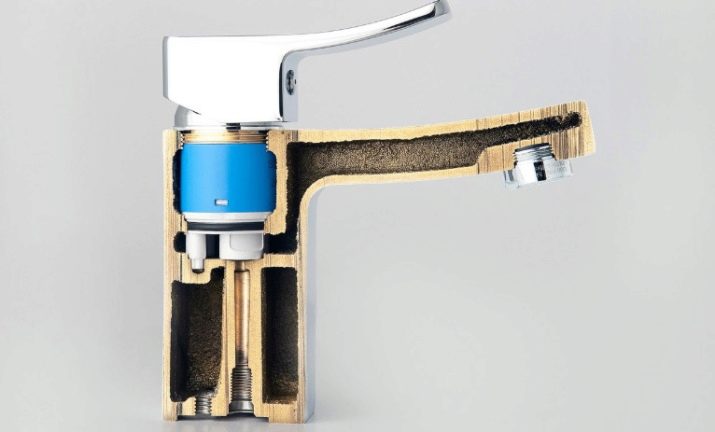
Another type of mechanical mixers are devices equipped with two control valves. One of them controls the cold water supply. And the second is responsible for the hot one. The valves themselves are of two types - with crane axle boxes and semi-turn. The action of the latter is based on the alignment of the holes of the two plates.
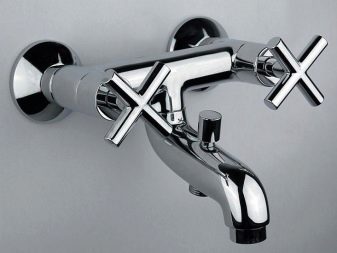
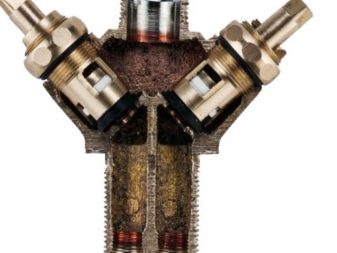
Electrical
This category of mixers does not require hot water, since cold water is heated to the desired temperature directly in the device itself. Responsible for this is a miniature built-in heating element.
Such models will be the best option for those who do not have hot water supply.
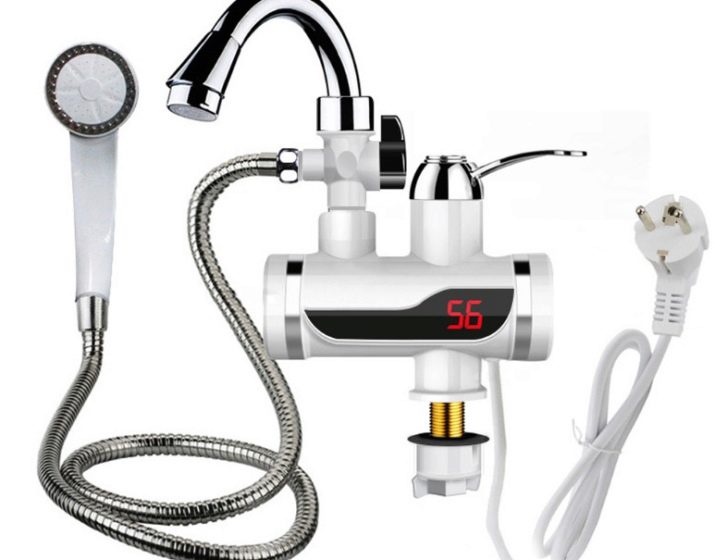
Electric faucets for shower cubicles are controlled by joysticks and touch panels.
It is important to remember that the installation of devices and their connection to the mains must be carried out by specialists.
The main disadvantages of the systems include fairly weak water flow. One solution would be use of pumps that increase pressure.
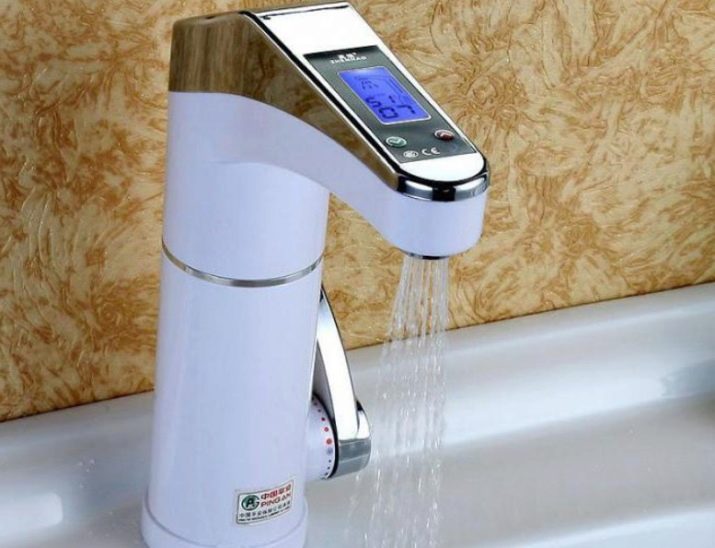
Another important point is the formation of scale. Also, when buying electrical models, you should consider their power. Experts recommend using them in tandem with temperature control thermostats. This is most important when the water pressure drops sharply.
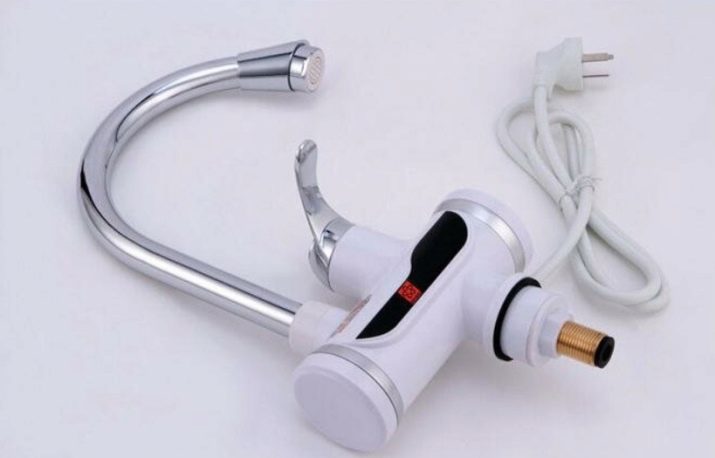
Thermostatic
In this case, we are talking about programmable models. Thanks to the corresponding function, it is possible to set the temperature that will be maintained in automatic mode. In parallel, a similar adjustment of the supply water pressure is possible. Thermostatic cockpit mixers are equipped with two corresponding controls. The temperature regime is set by levers or valves.
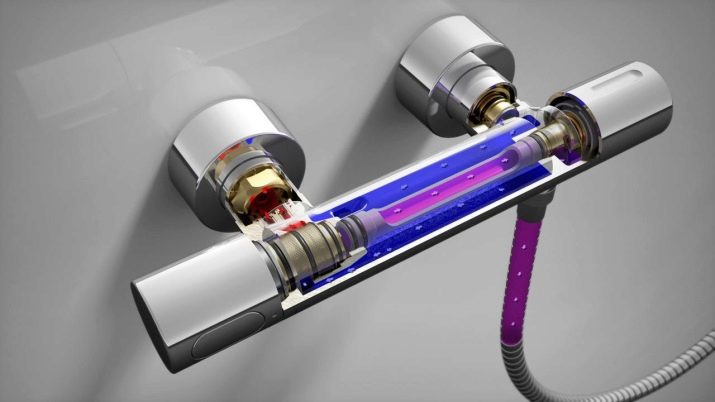
In accordance with the reviews and opinions of experts, the main advantages of these models include the following important points:
- it is possible to set the desired temperature one-time, and then change only the water pressure;
- the risk of burns, including with a sharp drop in pressure in the system, is practically reduced to zero.
In addition to all of the above, it is worth noting that thermostatic devices save water.
In this case, the key role is played by the absence of a stage for manual adjustment of pressure and temperature. Naturally, there are also certain disadvantages. The main disadvantage of the described models is their rather high cost.
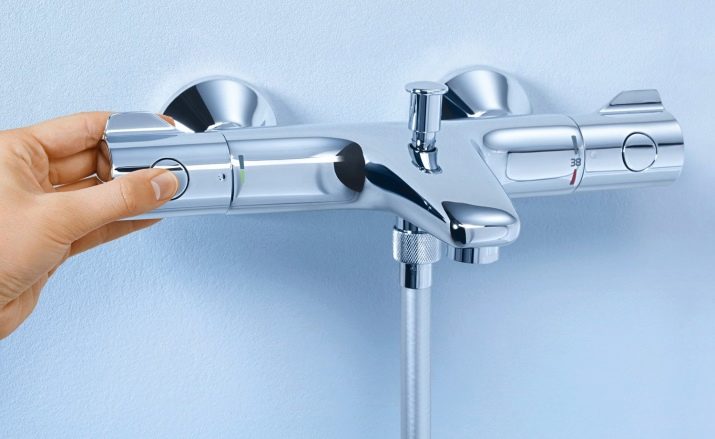
Number of modes
Modern faucets for shower cubicles can have several outputs, allowing you to connect different types of sprayers. For different modifications, their number varies from 1 to 7. At the same time, the devices operate in different modes: classic shower, hand shower, hydromassage and many others. You can choose between traditional single-mode and dual-mode options.

2 positions
Budget models, as a rule, have one provision. In such cases, it is impossible to simultaneously turn on the shower head and the hose. At the same time, maximum simplicity and reliability of the design are at the forefront. Devices for 2 positions are more functional and allow you to create comfortable conditions during the operation of the shower system.
In such mixers, the upper watering can is connected to one outlet, and the second directs water to the mobile part.
At the moment, such modifications are installed on relatively inexpensive cabins.
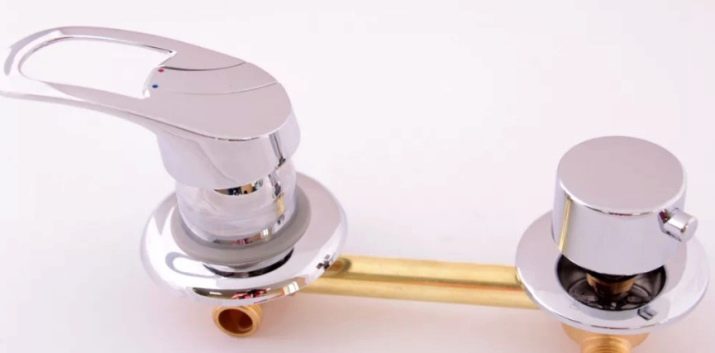
3 positions
It is this option, according to statistical data, today is most popular. Devices in this category allow you to activate the overhead shower, side jets and various combinations. As a result, it turns out to form a flow of water in three directions. It can be a standard outlet through a hose and a watering can, as well as activation of a hydromassage and a rain shower.
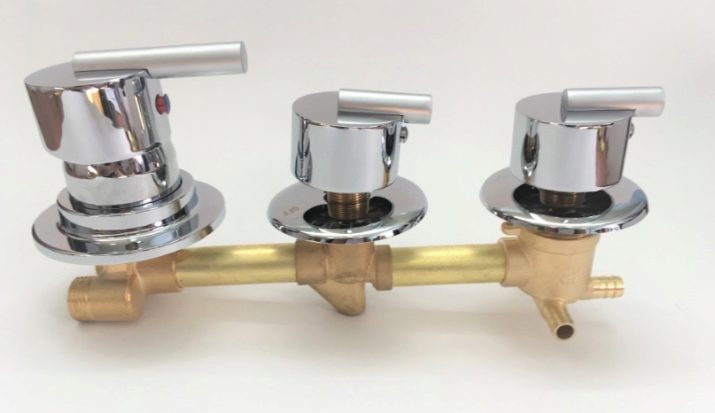
Outwardly, the three-position mixer resembles traditional single-lever tap. However, in reality, the device is more complex and has two bodies connected to each other by a copper or brass tube. The bodies themselves can be made of sanitary bronze or the same brass. Each of these structural elements contains a ceramic cartridge. In the first cartridge, hot and cold water are mixed, and then flow into the second. It is he who performs the function of switching between the provided modes.

4 positions
These mixer modifications are multifunctional mechanisms that allow you to choose the most comfortable mode of operation of the shower system. Device designs include the following elements:
- divertor - a mechanism that changes the direction of the water flow taking into account the operating mode of the entire system selected by the user (depending on the model, a rain shower, massage nozzles and other spout options can be activated);
- nestsin which water is mixed;
- tubeconnecting the nests;
- cartridges;
- flywheel;
- decorative elements.
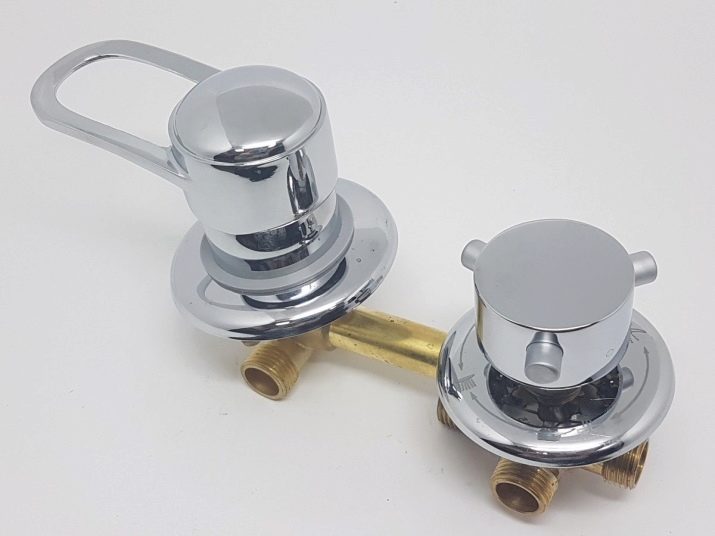
This type of faucet for modern shower cabins provides for the connection of not only the listed water sprays. It can also be used for foot hydromassage nozzles. The list of functions will directly depend on the model of the cabin itself.
Before purchasing a device designed to activate a large number of modes, you should consider a number of nuances.
First of all, every additional atomizer adds value. At the same time, not all outputs will eventually be activated. Often, having purchased a mixer for 4 or more positions, their owners use no more than three.
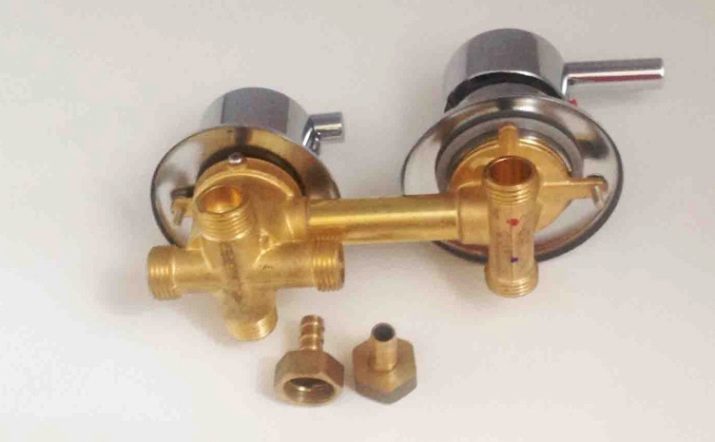
Materials (edit)
The material from which the mixer is made will determine its performance, including durability and aesthetics.
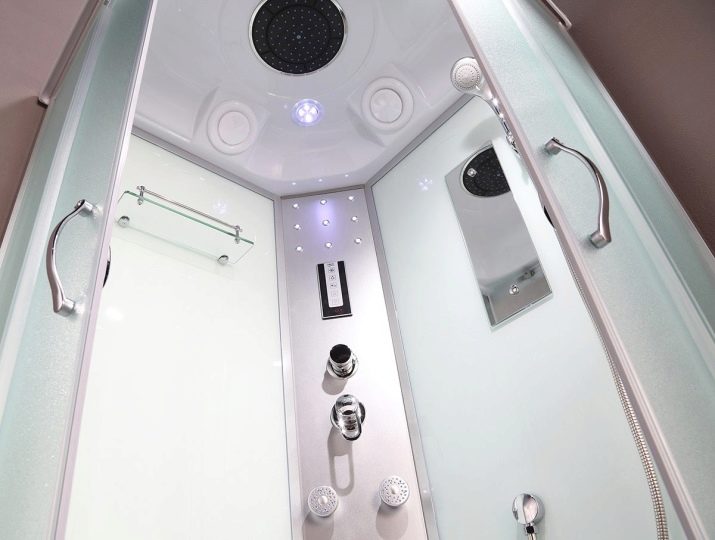
Traditionally, the market presents models made of materials, which will be discussed below.
- Brass, which is an alloy of copper (60-80%) and zinc. It is the most popular and widespread raw material for sanitary ware and valves. The key characteristics of brass are elasticity and relatively high strength. The material is resistant to corrosion, pressure drops in the system and temperature. In order to provide an aesthetic appearance, electroplating or enamel is applied to the surfaces of brass devices.

- Stainless steel with a chromium content in the alloy of at least 13%. This material, with the appropriate quality, is characterized, first of all, by increased strength and wear resistance. Unfortunately, due to the unique performance indicators on the market, you can find many fakes of stainless steel products from well-known manufacturers. And the model lines of such plumbing devices from leading brands themselves are rather monotonous.
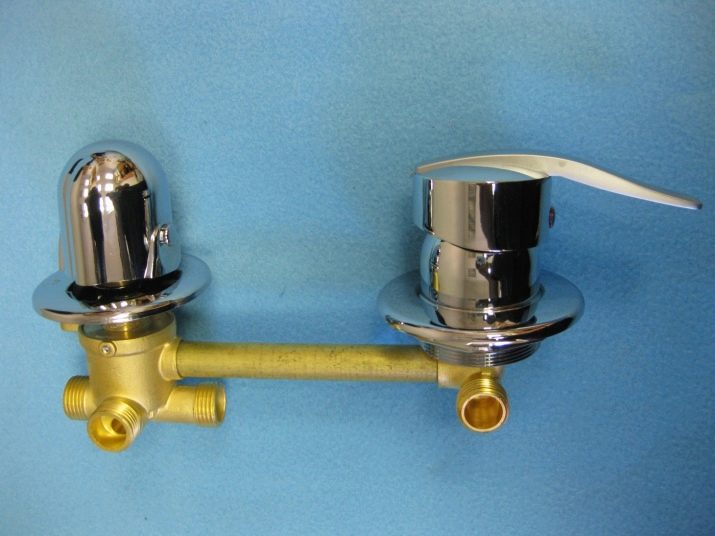
- Plumbing bronze, superior in basic characteristics to copper and brass. The fluidity of this material in the molten state allows you to create products of various shapes and with a variety of decorative elements of any complexity.
Bronze models become the optimal solution for showers made in retro style.
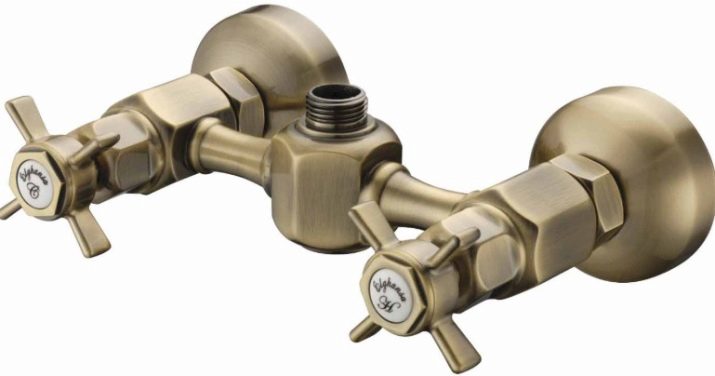
In addition to all of the above, there are products on the market made of modern polymer materials. In particular, this refers to high density polyethylene. Products made from this material are usually offered by Chinese companies. Despite the low cost, experts do not recommend purchasing such mixers, since their service life rarely exceeds 2-3 years.
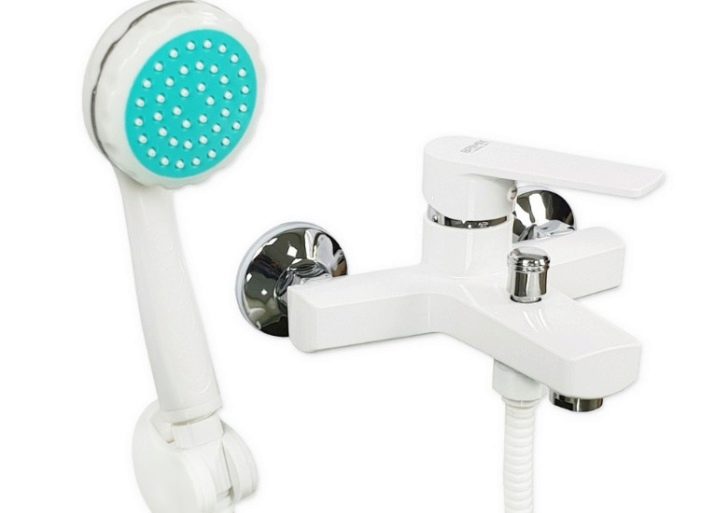
Dimensions (edit)
It is no secret that its service life directly depends on the correct installation of any plumbing device.
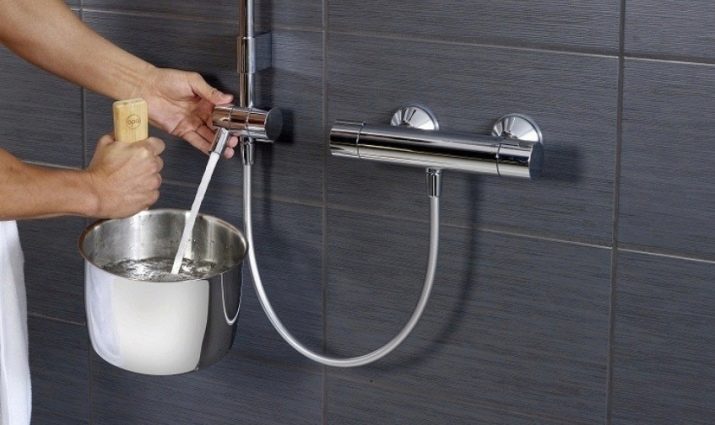
When choosing and installing mixers, it is important to take into account the existing standards, enshrined in the relevant rules.
- Height of the mixer from the edge of the pallet with a tap... This indicator affects the noise level of the flowing water. Also, the possibility of filling containers of various sizes depends on it. For the vast majority of modern shower cabins, this moment is irrelevant. However, when it comes to open models, then the installation height should be taken into account.
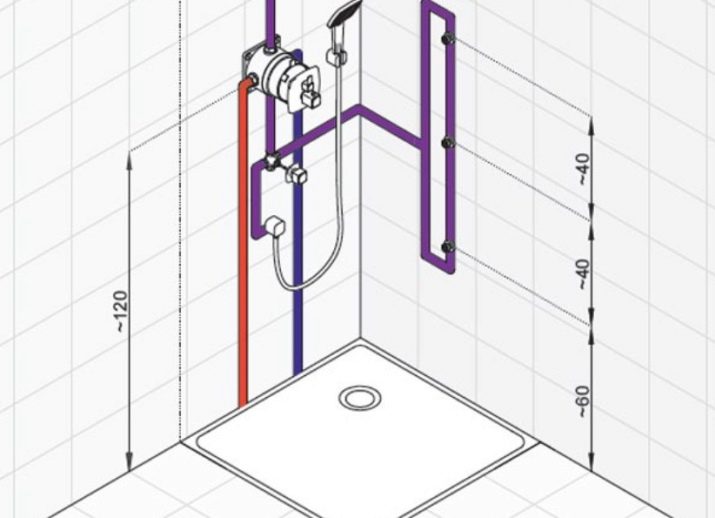
- Height from floor level. It is on this parameter that the indicator and stability of water pressure can depend. In accordance with current standards, the height should be about 0.8 m. As in the first case, these requirements are relevant only for open booths when installing wall-mounted mixer models.
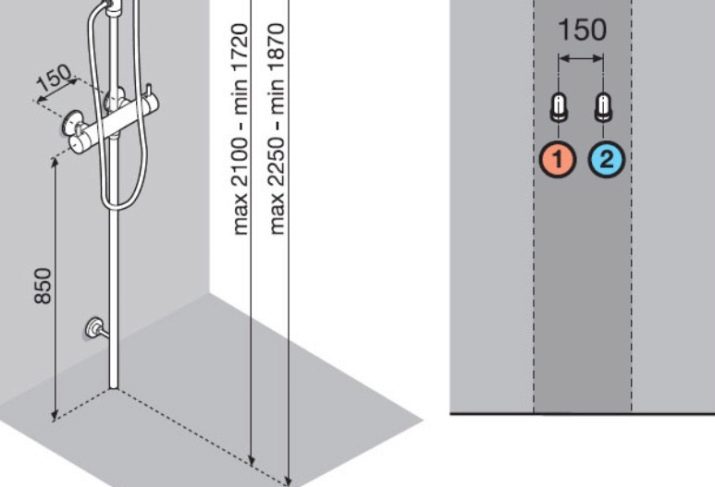
- Directly the dimensions of the plumbing device itself. When choosing a specific model, they are calculated taking into account the peculiarities of the operating conditions. An equally important point will be the dimensions, design and functionality of the cabin itself. The style of decoration, including the entire bathroom, also matters.
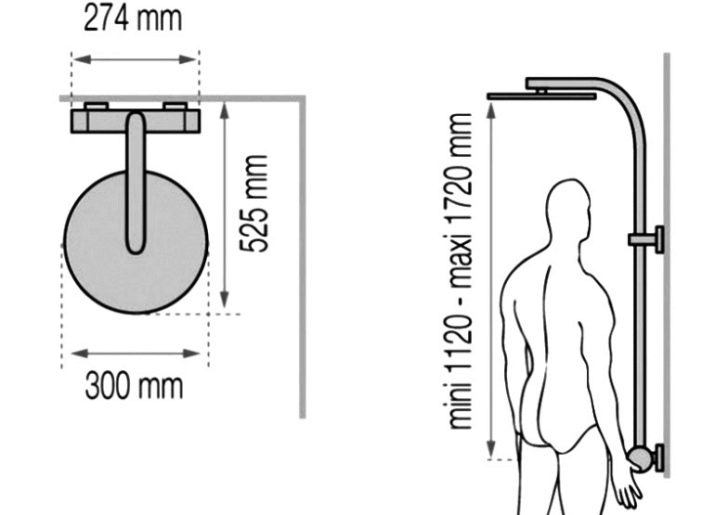
In accordance with current regulations, wall-mounted faucets are manufactured according to specific standards. So, the distance between the centers of the water inlet fittings can be 100 or 150 mm.

Manufacturers
The quality, performance and service life of a mixer largely depends on its manufacturer. It is for this reason that it is recommended to pay special attention to the brand of the product.
The leaders of this market segment are traditionally companies representing Italy, Germany and Finland.
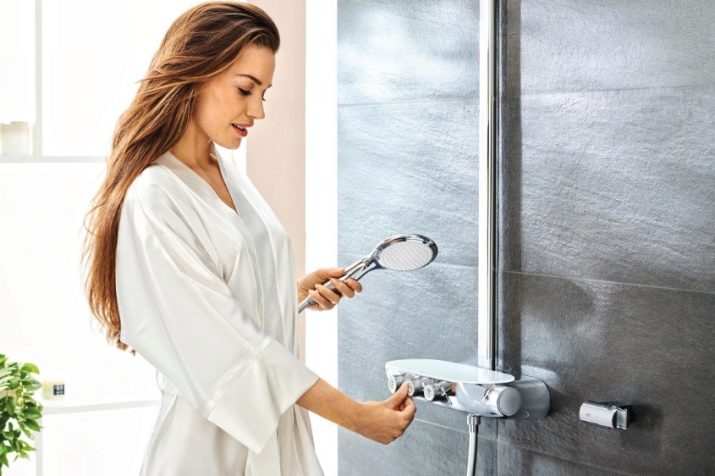
So, at the moment, the most popular German brands include Hyber, Kermi and Huppe.
The main competitive advantage of these companies is high quality.
In addition, a wide range of products and functionality of mixers are among the indisputable advantages. Certified devices, fully complying with all applicable standards, are made of alloy bronze and high quality stainless steel.
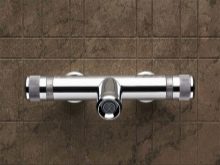
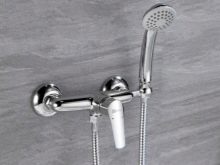
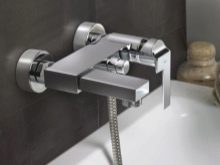
Italy is represented in the rating of the world leaders in the sanitary ware market by the brands Cerutti and Jacuzzi. The products of these companies belong to the premium segment. Naturally, the list of advantages does not include low cost, and in Russia there may be problems with the purchase of components if repair is needed. However, this is fully offset by high quality and performance.
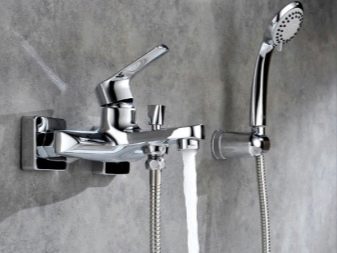
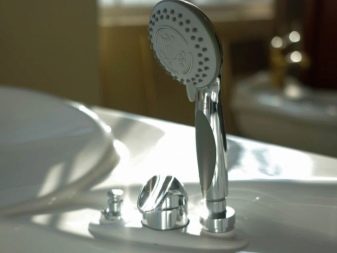
Italian shower mixers are equipped with integrated heaters, multi-purpose diverters and electronic thermostats.
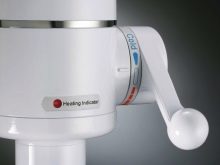
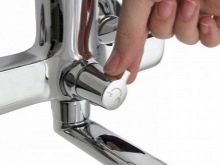
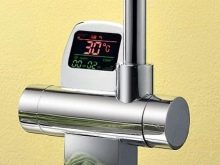
Finnish companies Timo and IDO Showerama offer high-quality sanitary fittings for shower stalls of various models. Manufacturers give their products a five-year warranty.
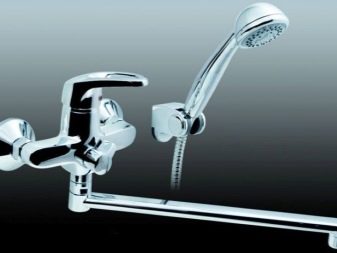
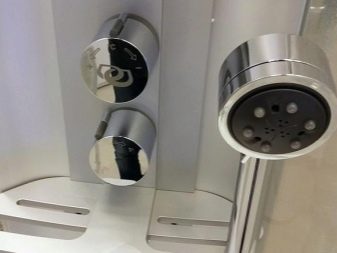
It is worth noting that due to the sharp rise in demand, Timo has launched production facilities in Hong Kong. According to some reviews, this decision negatively affected the quality of the products.
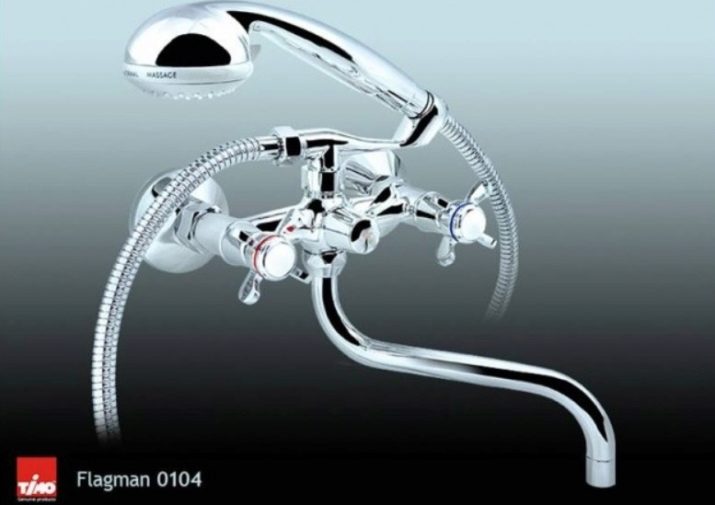
Selection Tips
First of all, it should be borne in mind that, according to the principle of operation, most faucets for shower stalls differ from similar devices for conventional baths and sinks. Based on this, it is required to competently approach the choice of a device.
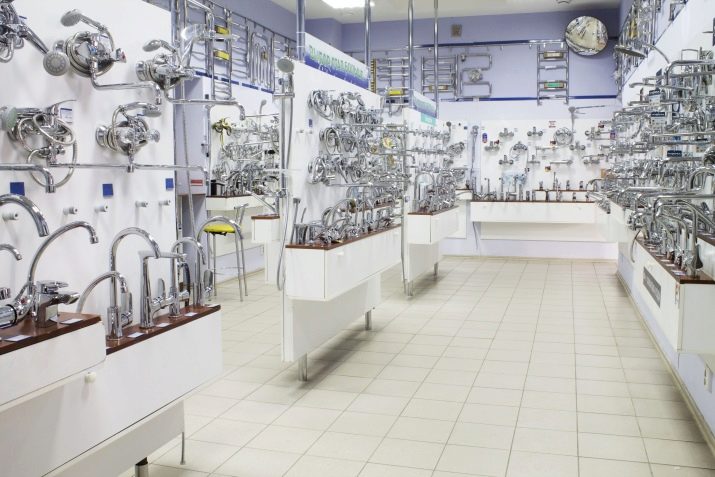
There is a fairly wide list of criteria that should be taken into account.
- Number of modes, which should correspond to a similar characteristic of the cabin itself.
- Features of device connection (clamps or threaded elements).
- Distance between the mixer bodies.
- Cartridge diameter. The best option would be models with standard sizes so that there are no problems with replacement.
- Mixer material... Experienced experts advise making a choice in favor of sanitary bronze and brass. However, do not discount the stainless steel models.
- Control coating quality (valves, levers and joysticks), which determines the length of the service life. If we are talking about chrome-plated elements, then an indicator of good quality will be a monochromatic gloss without sagging.
- The material from which all parts are made, including fasteners. Brass and bronze are also preferred here. Steel elements will inevitably begin to rust on contact with water.
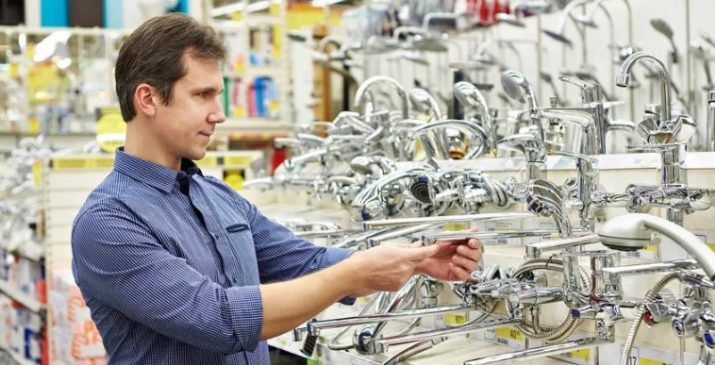
Another important consideration will be the selection of the correct switching cartridge. In the vast majority of modern mixer models, this is one of the key details.
When choosing these elements, you should pay attention to the quality of the material and the manufacturer. Otherwise, you will have to face the need for frequent replacement.
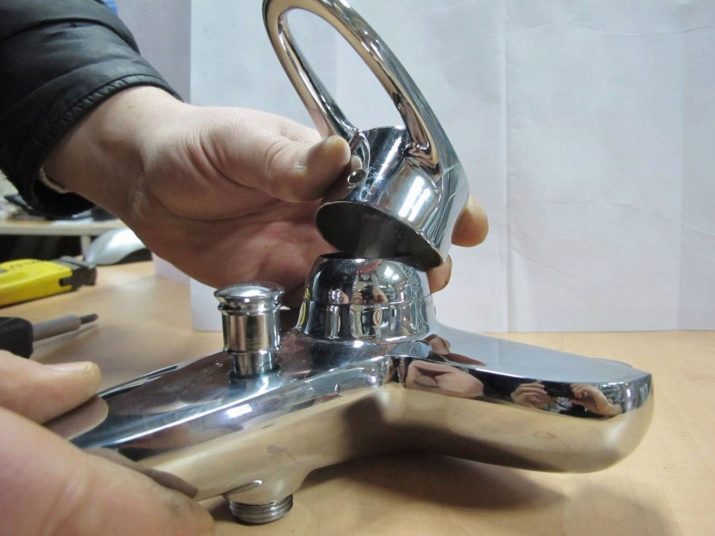
In the following video, you will learn how to properly install the mixer in the shower stall.








